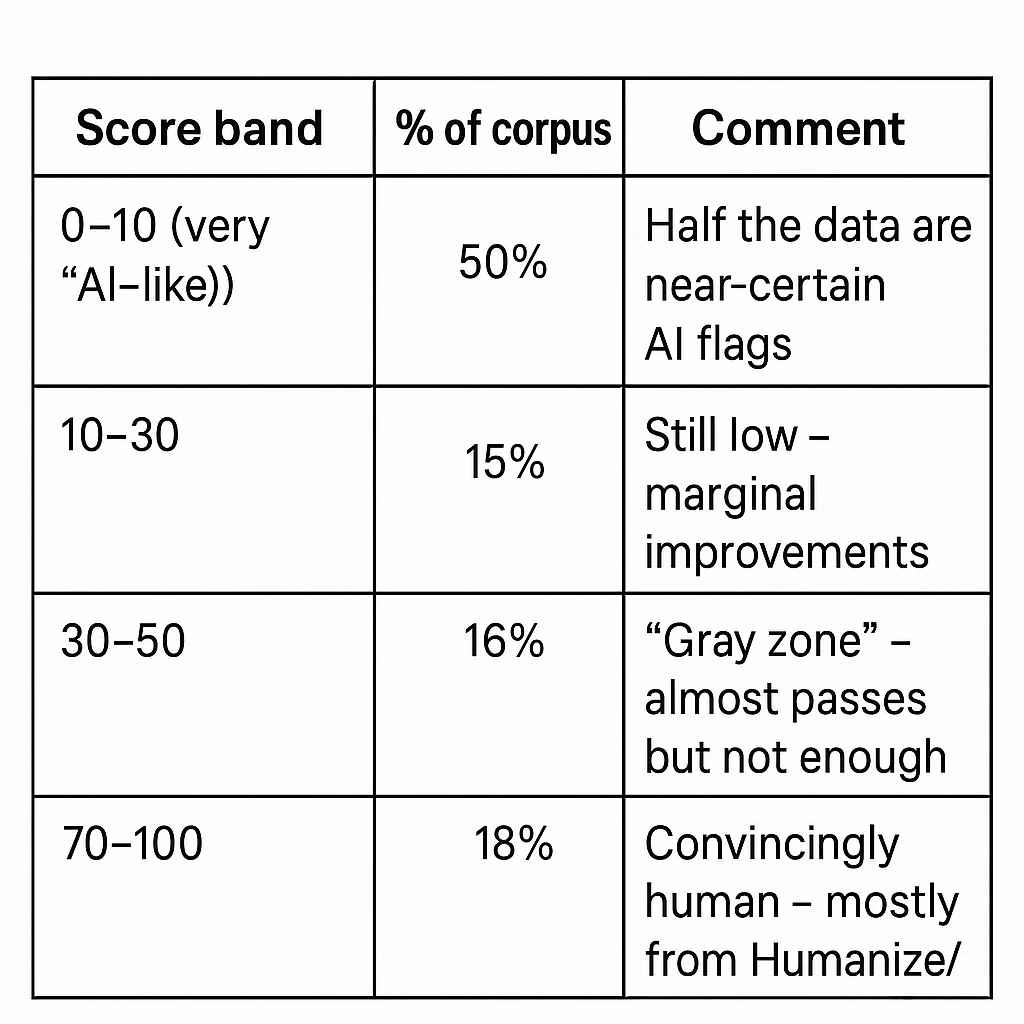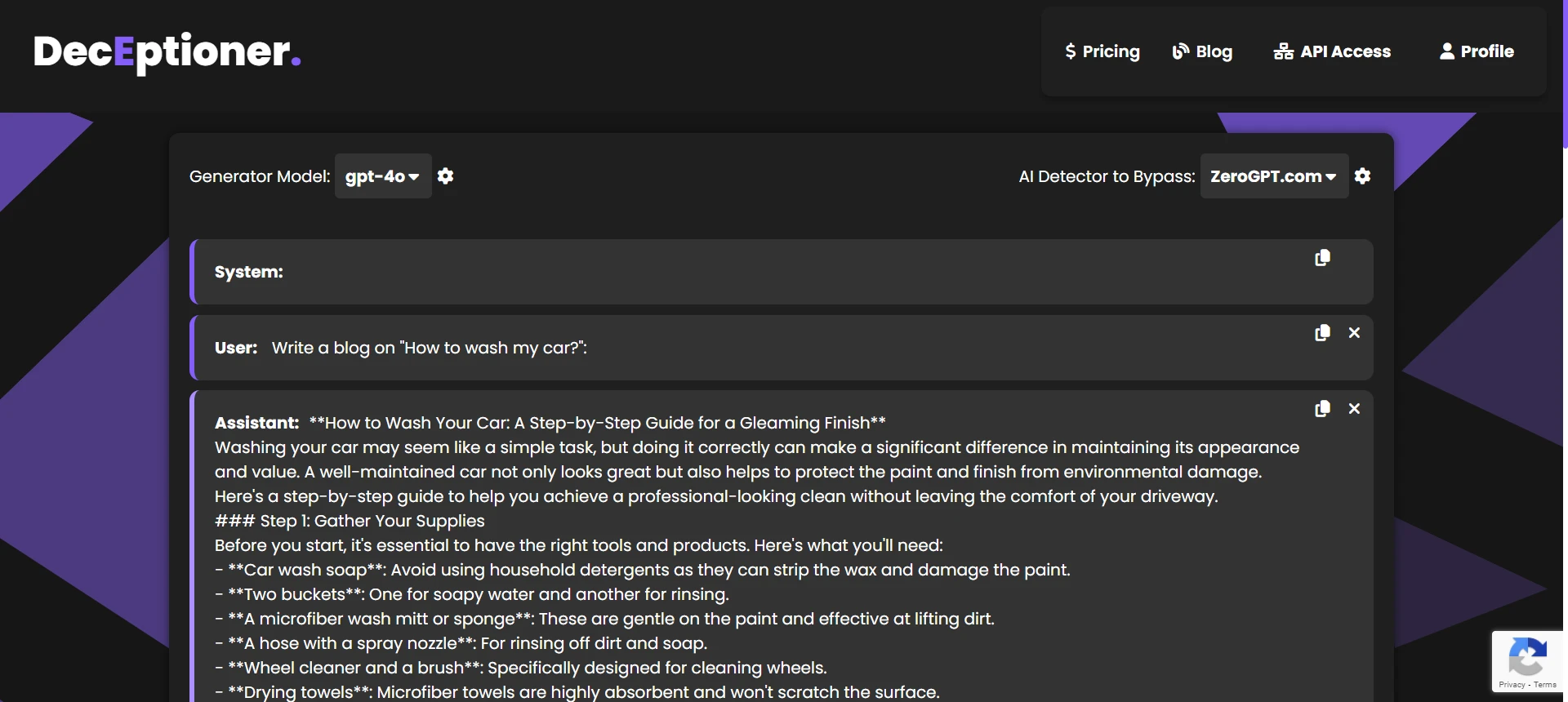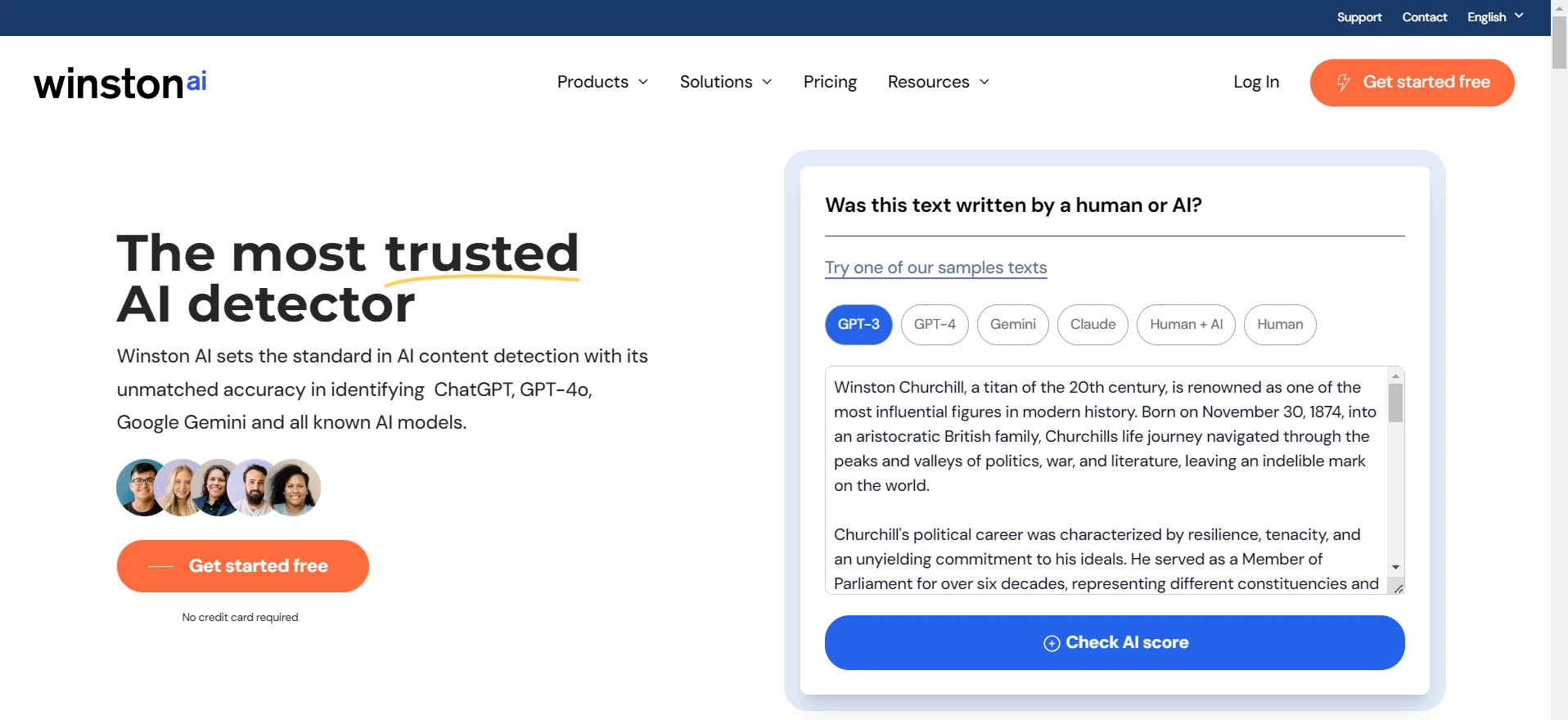As we all know it Quillbot gets pretty easily detected by Winston AI. But does the same happen with GPTZero? The short answer is YES. The longer answer is the devil lies in the details. Keep reading to know more about it.
Why Quillbot gets detected by GPTZero?

Just like Turnitin, GPTZero is not some low-level AI detector. They’ve coded it to spot AI-generated or paraphrased text by analyzing things like stylometric patterns, perplexity, burstiness, and more. If it is not made to accomplish the task of fooling AI detectors, it wont do it consistently. Quillbot never explicitly says they can bypass AI detectors on their website, so it’s bound to get flagged by GPTZero.
In our 100-sample experiment, Quillbot rewrites were tested against GPTZero. The results are quite surprising yet also expected. The test found:
- 81% of the paraphrased passages were still flagged as AI.
- Only 19% managed to pass GPTZero’s usual 50-point threshold.
Hence, if you try to rely on Quillbot’s rewrites alone, you’ll probably get detected most of the time. That’s the bitter truth.
Quick take-aways
- Sample size: 100 paraphrased passages.
- Mean GPTZero “human-ness” score: 27.9 out of 100.
- Pass rate at ≥ 50 points: only 19%.
Observations
- Among the different modes, “Humanize” did best but still fails more than half the time (around 46% success).
- “Shorten” and “Creative” modes reached 30–36% success, which is still pretty low.
- “Academic,” “Expand,” and “Formal” didn’t pass at all. Their success rate was literally 0%.
So all in all, if you’re thinking Quillbot’s “Humanize” mode will push you to 100% success, you are mistaken. You might still get flagged by GPTZero more than half of the time.
Also Read: Can Originality AI detect Quillbot?
Reliability as an “AI bypasser” or humanizer?
Now let us see the reliability angle. The overall effectiveness is low, with an 81% detection rate. This means GPTZero still spots the majority of Quillbot paraphrases. Even with your best shot — “Humanize” mode — you are more or less flipping a coin.
Score distribution also tells a story:
- Half the paraphrases were under 10 on GPTZero’s 0–100 scale, a near-certain AI flag.
- A narrow tail around 18% reached high human scores of 70–100, mostly from “Humanize” and “Shorten” modes.
Quillbot modes in a nutshell
| Mode | Passages analysed | Avg GPTZero score | Classified Human (%) |
|---|---|---|---|
| Humanize | 11 | 57.6 | 45.5 |
| Shorten | 11 | 50.4 | 36.4 |
| Creative | 10 | 41.0 | 30.0 |
| Simple | 11 | 31.7 | 27.3 |
| Fluency | 11 | 20.3 | 18.2 |
| Standard | 12 | 31.9 | 16.7 |
| Academic | 11 | 6.7 | 0.0 |
| Expand | 12 | 4.0 | 0.0 |
| Formal | 11 | 10.4 | 0.0 |
- Humanize mode – Best chance so far (≈ 46% pass rate) but still not consistent.
- Shorten mode – Around 36% pass, so better than the other modes except Humanize.
- Creative mode – ~30% success, too low to rely on for a guaranteed pass.
- Academic, Formal, Expand – 0% success. Definitely a no-go if you want to bypass AI detectors.
More numeric breakdown
Below is a quick breakdown of the paraphrased sample (100 texts) based on their GPTZero scores:
One big question that always comes up is: does rewriting length matter? A quick correlation check said no: r is about –0.07, so no direct link between text length and detection success.
What does it mean for you?
The main takeaway is that Quillbot’s paraphraser is not made to bypass AI detectors like GPTZero or ZeroGPT. Even though you might find an occasional rewrite that passes, you can’t depend on it for consistent results. If you absolutely must bypass GPTZero, you might want to consider reliable humanizers like Deceptioner.
Opinion
In my view, the best way to stay safe is using a multi-step rewriting approach if you absolutely need it. For instance, you can restructure your content yourself, then use Quillbot (in Humanize mode), and finally polish it manually. This multi-layered method is more dependable than hoping that Quillbot alone does the trick.
How GPTZero.me works?
GPTZero.me is not your average AI detector. It probably uses a combination of Natural Language Processing, stylometric analysis, and machine learning models trained on huge datasets to separate AI text from human text. They keep refining their approach so that simple rephrasing doesn’t fool it. The site also tries to gauge text coherence and consistency, plus it might check for anomalies or patterns that indicate machine writing.
Here’s a simplified table showing the method GPTZero.me typically uses (based on general AI detection practices):
| Component | Description |
|---|---|
| Natural Language Processing (NLP) | Analyzes text structure and flow to detect patterns that indicate AI-generated content. |
| Stylometric Analysis | Examines writing style metrics like vocabulary usage, syntax, and sentence complexity. |
| Machine Learning Models | Trains on large AI-written and human-written samples to distinguish subtle differences. |
| Contextual Understanding | Checks if the text’s logic and flow align with typical human reasoning and coherence. |
| Data Patterns & Anomalies | Scans for repetitive structures, unusual phrases, or suspiciously “perfect” grammar. |
Conclusion
So, can GPTZero detect Quillbot? Yes, obviously it can. Quillbot is not specifically engineered to produce text that bypasses GPTZero. Our 100-sample test shows that 4 out of 5 times, GPTZero sees right through Quillbot’s rephrased outputs. If bypassing AI detectors is your goal, consider a tool that is purpose-built for that, or invest some time in your own rewriting approach. As I always say, writing style is half the battle – if you truly want to fly under the radar of AI detectors, you need to adopt a style that looks native, includes minor errors, and doesn’t reek of machine perfection.


![[HOT TAKE] Why is ZeroGPT so bad?](/static/images/why-is-zerogpt-so-badpng.webp)
![[DIRECT] Best Affordable AI Humanizers (That Still Work in 2025)](/static/images/best-affordable-ai-humanizerspng.webp)
![[HOT] Can You Compare ZeroGPT With Other Top Tools?](/static/images/can-you-compare-zerogpt-with-other-top-toolspng.webp)
![[HOT] Is JustDone AI Detector Accurate?](/static/images/is-justdone-ai-detector-accuratepng.webp)





